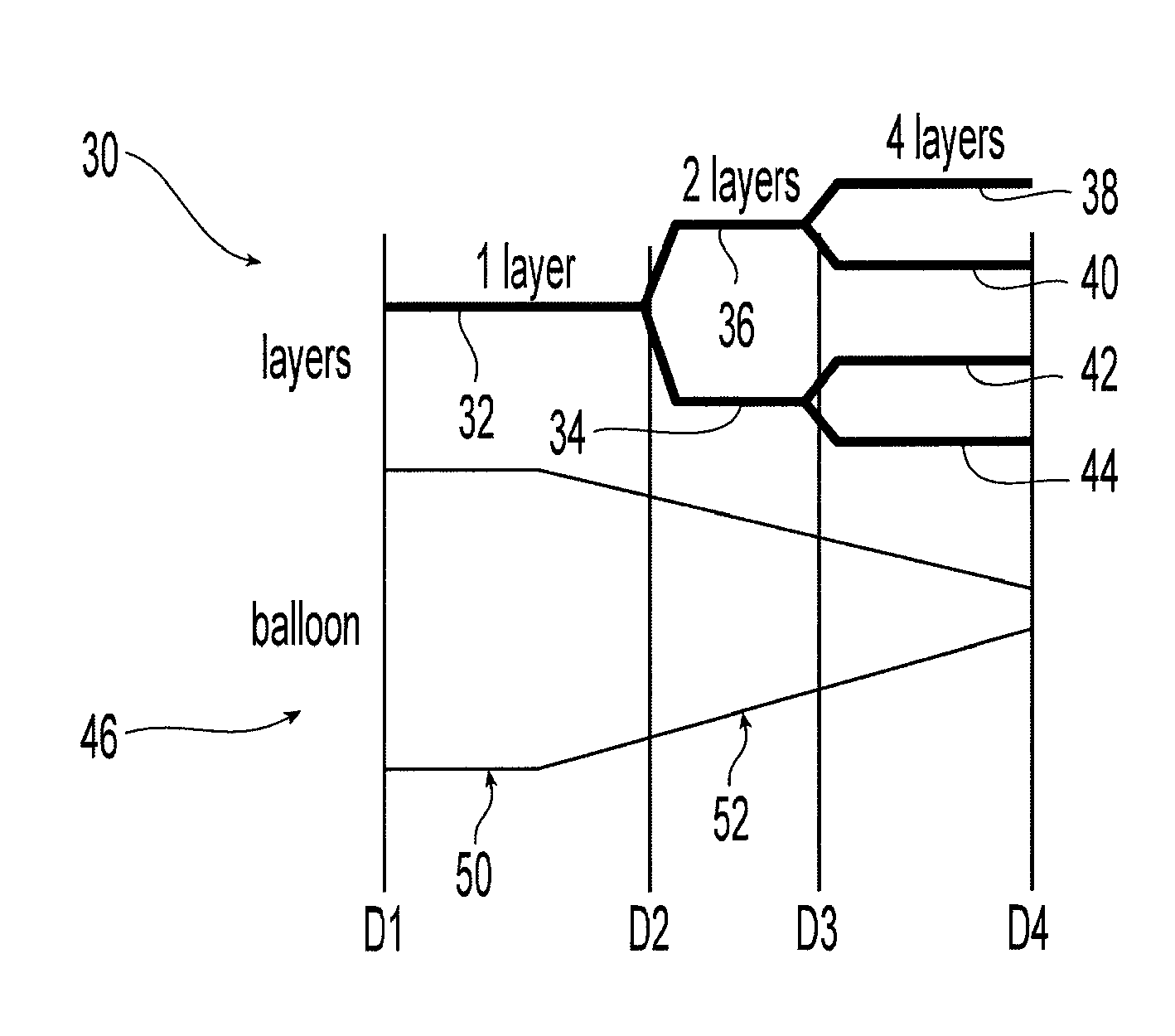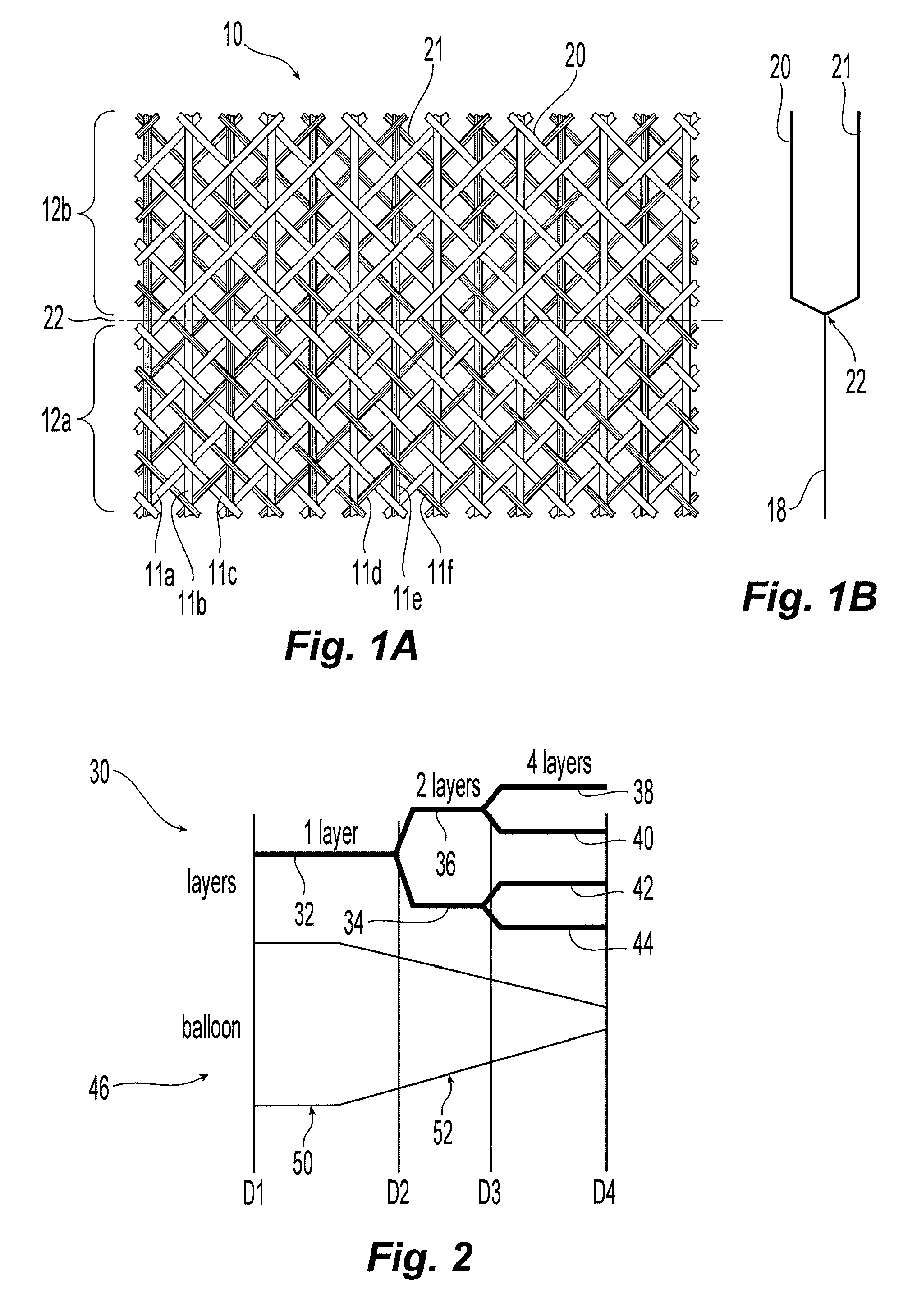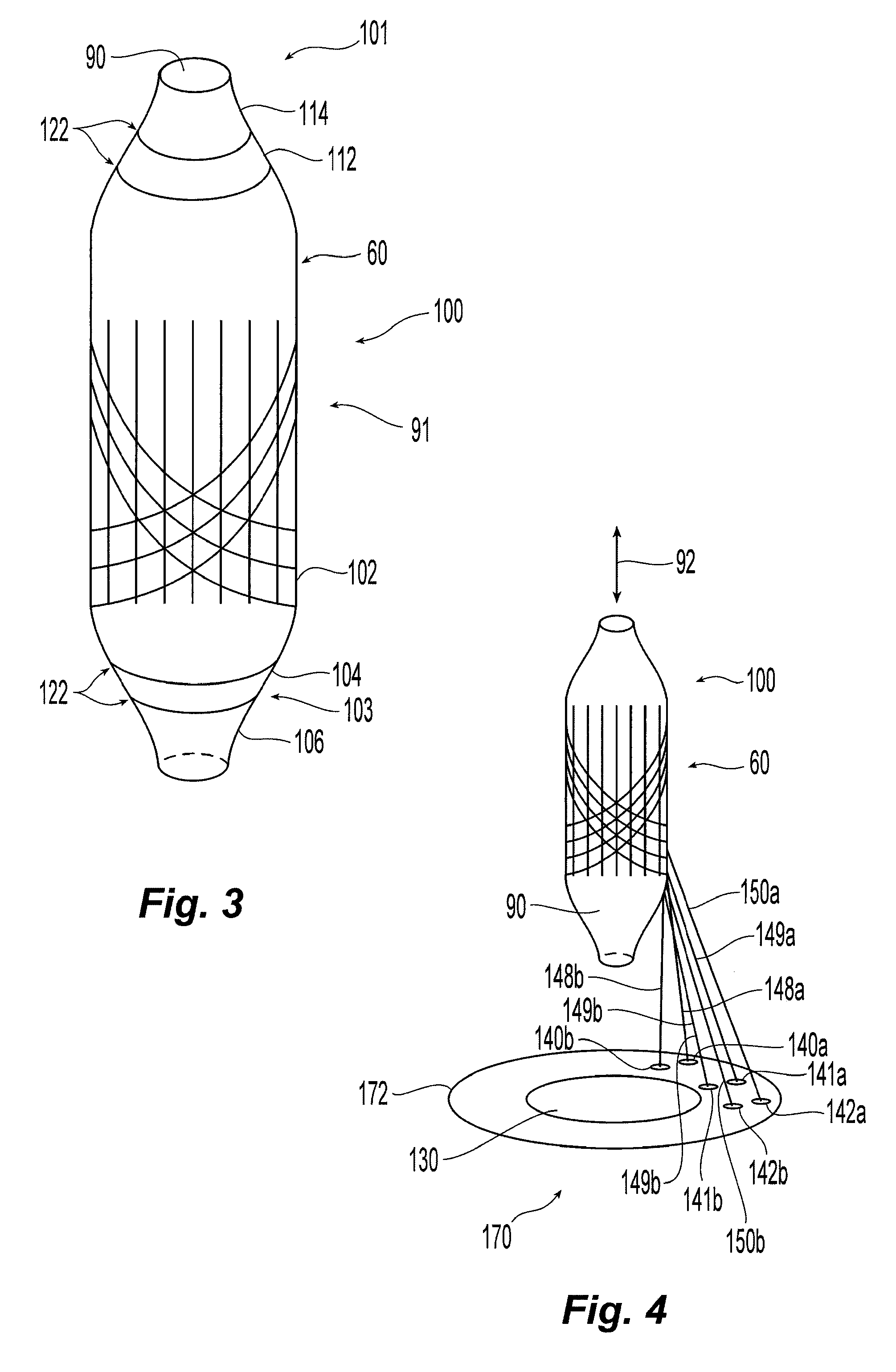Balloon with dividing fabric layers and method for braiding over three-dimensional forms
a technology of weaving fibers and fabric layers, applied in the field of weaving fibers and fabrics reinforced balloons, can solve the problems of non-automated aspects of such processes, increase the cost and time investment of manufacturing a medical balloon, and increase the cost and time investment of such processes, so as to reduce the diameter of the balloon, minimize the jamming or bunching of the woven fabric, and reduce the fiber density of the single layer fabric
- Summary
- Abstract
- Description
- Claims
- Application Information
AI Technical Summary
Benefits of technology
Problems solved by technology
Method used
Image
Examples
Embodiment Construction
[0028]As illustrated in FIGS. 1A and 1B, an exemplary fabric 10 has a triaxial structure with fibers 11a, 11b, 11c, 11d, 11e, 11f disposed in three directions to form a braid of the fabric 10. Fibers 11a, 11b, 11c are illustrated without shading and fibers 11d, 11e, 11f are illustrated with shading. Fabric 10 has two portions: a single-layer portion 12a where the fibers 11a, 11b, 11c, 11d, 11e, 11f are interwoven to form the fabric 10 with a single layer 18, and a two-layer portion 12b where the fibers 11a, 11b, 11c are interwoven to form a first layer 20 of the fabric 10 and the fibers 11d, 11e, 11f are interwoven together to form a second layer 21 of the fabric 10. As also illustrated in FIG. 1A, it can be seen that layers 20 and 21 are identical in terms of the braid pattern and offset relative to each other.
[0029]The boundary where the fabric 10 transitions from the single-layer portion 12a to the two-layer portion 12b is a transition line 22. As can be appreciated from FIGS. 1A...
PUM
 Login to View More
Login to View More Abstract
Description
Claims
Application Information
 Login to View More
Login to View More - R&D
- Intellectual Property
- Life Sciences
- Materials
- Tech Scout
- Unparalleled Data Quality
- Higher Quality Content
- 60% Fewer Hallucinations
Browse by: Latest US Patents, China's latest patents, Technical Efficacy Thesaurus, Application Domain, Technology Topic, Popular Technical Reports.
© 2025 PatSnap. All rights reserved.Legal|Privacy policy|Modern Slavery Act Transparency Statement|Sitemap|About US| Contact US: help@patsnap.com



